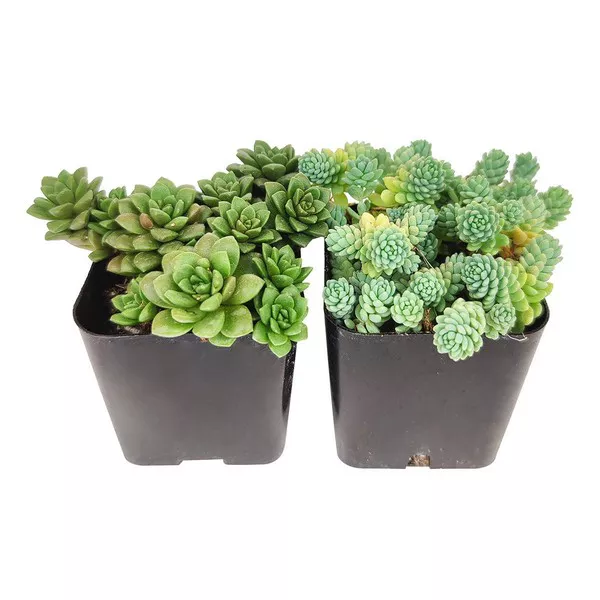Succulents have taken the gardening world by storm with their unique beauty and low-maintenance requirements. One of the most exciting aspects of succulent cultivation is propagating new plants from cuttings. This method allows you to multiply your succulent collection, share your plants with friends, and experiment with different varieties.
Selecting the Perfect Succulent Cuttings
Before you can start the replanting process, it’s essential to select the right succulent cuttings. Look for healthy, disease-free stems and leaves, as these will give you the best chance of success. You can choose between three primary types of succulent cuttings:
a. Leaf Cuttings: Gently remove a healthy leaf from the parent plant. Make sure the leaf is mature, plump, and free from damage or disease. Allow the cut end to callus for a day or two to prevent rot before planting.
b. Stem Cuttings: Take a clean cut of a succulent stem, ensuring that it’s free from any signs of disease or damage. Allow the cut end to callus as well, usually within a day or two.
c. Offsets or Pups: Some succulents, like Echeveria and Sempervivum, produce offsets or pups around the base of the main plant. These can be carefully removed when they have developed their own root system.
Choosing the Right Container and Soil
Succulents thrive in well-draining soil and containers that allow excess water to escape. When replanting succulent cuttings, it’s crucial to use the appropriate tools. Opt for a container with drainage holes to prevent waterlogged soil, and use a well-draining succulent mix. A typical succulent mix comprises a combination of potting soil and perlite or sand to ensure optimal aeration and water drainage.
Planting Succulent Cuttings
Planting your succulent cuttings correctly is the key to their successful growth. Here are the steps to follow:
a. Fill the container with your succulent mix, leaving about an inch of space from the top.
b. For leaf cuttings, gently insert the callused end of the leaf into the soil, burying it just enough to keep it upright.
c. For stem cuttings, plant the cut end into the soil, leaving at least an inch or two above the soil surface.
d. For offsets or pups, nestle them into the soil with their roots covered and a small portion of the base above the soil line.
Providing Adequate Light
Succulents are known for their love of sunlight. Place your newly planted cuttings in a location where they can receive bright, indirect sunlight. A south- or west-facing window is usually ideal for most succulent varieties. Avoid exposing them to intense, direct sunlight right away, as this can lead to sunburn.
Watering Succulent Cuttings
Succulent cuttings require a different watering approach than mature plants. Overwatering is a common mistake that can lead to rot, so it’s essential to be cautious. Here’s a general guideline for watering succulent cuttings:
a. Water sparingly: Initially, water lightly and sparingly. For leaf cuttings and stem cuttings, mist the soil surface until it’s lightly moist. For offsets or pups, water around the base without saturating the soil.
b. Monitor soil moisture: Allow the soil to dry out between watering. The frequency of watering will depend on your specific succulent type, local climate, and time of year.
c. Gradually increase water: As your succulent cuttings establish roots and show signs of growth (usually after a few weeks), you can gradually increase the amount of water.
Fertilizing Succulent Cuttings
Succulent cuttings do not require heavy fertilization during their early stages. You can use a diluted, balanced, liquid succulent fertilizer (e.g., 20-20-20) every 4-6 weeks during the growing season. Be cautious not to over-fertilize, as succulents are sensitive to excess nutrients.
Propagation Challenges and Solutions
Replanting succulent cuttings can be a rewarding endeavor, but it’s not without its challenges. Here are some common issues you may encounter and how to address them:
a. Rot: If you notice any signs of rot on your cuttings, such as a soft, discolored appearance, it’s essential to act quickly. Remove the affected parts and allow the remaining portion to callus before replanting.
b. Overcrowding: As your cuttings grow, they may become crowded in their container. To prevent competition for resources, transplant them into individual pots as needed.
c. Leggy Growth: Leggy growth, where the succulent stretches towards light, can occur if they are not getting enough sunlight. To correct this, move the cuttings to a sunnier location and behead any leggy stems to encourage a more compact form.
d. Pests: Keep an eye out for common succulent pests like aphids, mealybugs, and spider mites. Address infestations promptly by using insecticidal soap or neem oil.
Repotting Established Succulent Cuttings
As your succulent cuttings mature and their roots develop, they may outgrow their initial containers. It’s important to repot them into appropriately sized pots to ensure continued healthy growth. Follow the same guidelines for choosing containers and soil mix, and be gentle when transplanting to avoid damaging the roots.
Conclusion
Replanting succulent cuttings is an enjoyable and rewarding process that allows you to propagate new plants and expand your succulent collection. Remember that patience and proper care are key when it comes to nurturing these resilient and captivating plants. With the right selection, care, and a little green thumb, you’ll be well on your way to becoming a successful succulent propagator.


